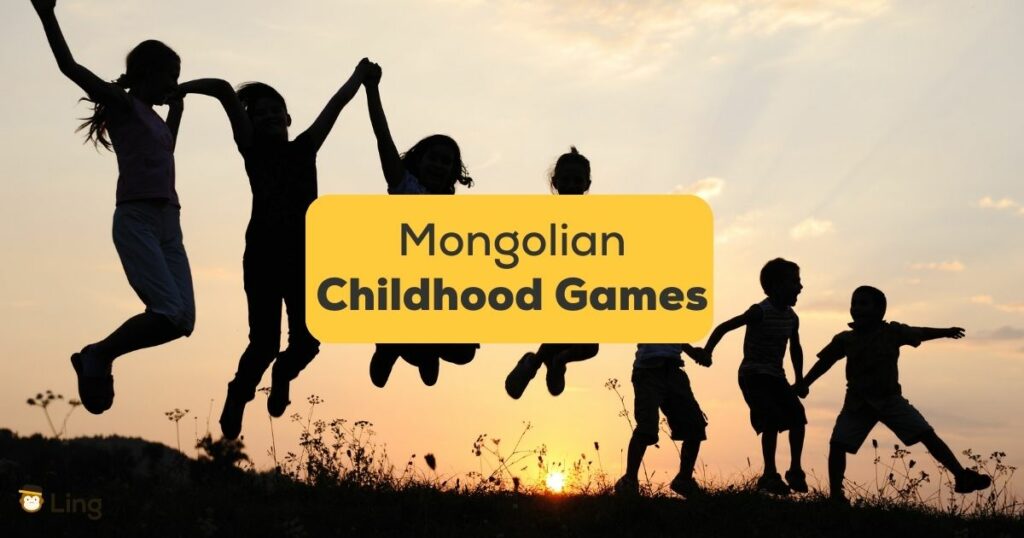Hey there, fellow adventurers! Get ready to take a delightful trip down memory lane as we dive into the enchanting world of Mongolian childhood games. In this article, we’ll explore the cherished pastimes that brought joy and excitement to kids across the vast Mongolian plains. Through traditional games passed down through generations, we’ll uncover the captivating essence of Mongolian playtime.
So, grab your nostalgia goggles and prepare for a heartwarming journey filled with laughter, camaraderie, and a touch of friendly competition!
The Significance Of Mongolian Childhood Games
Mongolian folk games may seem like child’s play, but they’re so much more than that. These games are like the threads weaving through the fabric of Mongolian culture, connecting generations and preserving traditions.
Imagine this: kids giggling, elders watching, as they gather around a game of Shagai. It’s about keeping a lifestyle alive, teaching respect for nature, and instilling values like teamwork and fairness. So, the next time you witness kids playing Mongolian traditional games, remember that it’s not just child’s play; it’s a beautiful tradition that’s stood the test of time.
Mongolian Childhood Games
Are you ready? Let’s dive in and rediscover the magic of common games played in Mongolia!

Shagai (Ankle Bone Game)
Our first Mongolian traditional game is Shagai. This unique Mongolian game is simple yet packed with tradition and tons of fun!
Objective: Your mission? On a flat surface, toss sheep or goat ankle bones at a target made of other bones. Score points by hitting the right ones. It’s all about precision and strategy!
Rules: Grab some ankle bones, flick one at the target, and rack up points based on which bone you hit. There are variations too, like “knocking,” where you aim to clear a circle. It’s a mix of skill and luck; and a blast!
Significance: Interestingly, this game is also a cultural gem. Passed down for generations, it’s a nod to Mongolia’s nomadic past. So, next time you see Shagai in action, remember, it’s not just fun; it’s a piece of history.
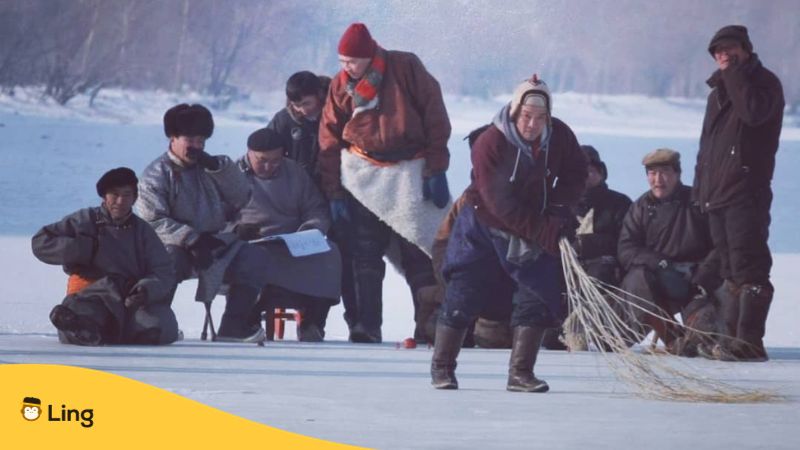
Ice Knucklebone
Objectives The aim of Ice Knucklebone is simple – toss knucklebones onto a frozen lake. Your target? Markings that are carved into the icy surface. It’s all about testing your accuracy, but a dash of luck can’t hurt.
Rules: Here’s how it works: Gather your knucklebones, often from sheep or goats. Then, venture out to a frozen lake, adding an exhilarating winter twist. Take one of the bones, toss it onto the lake, and aim for those markings. Different markings mean different points, so strategy is key. But here’s the kicker – if your knucklebone slips through the ice, well, that’s part of the game’s thrill.
Significance: Ice Knucklebone is more than just a game; it’s a symbol of Mongolian outdoor spirit and nomadic traditions. It’s how friends and families bond on frozen lakes, a tradition deeply rooted in cultural heritage.
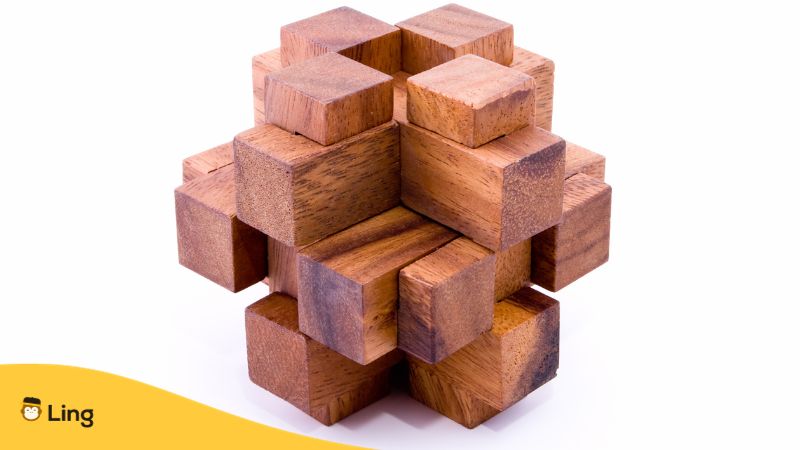
Burr Puzzle
Alright, puzzle enthusiasts, get ready to unravel the mystique of the Burr Puzzle, a Mongolian brain-bender that’s as fascinating as it is perplexing.
Objectives: So, what’s the aim here? It’s all about disassembling and reassembling this intricate, multi-piece wooden puzzle. The goal is to figure out the secret to unlocking its pieces and, ultimately, putting it back together again. It’s like a cryptic code waiting to be cracked.
Rules: The puzzle is made up of wooden pieces that fit together. Your job? Disassemble it, one piece at a time, without tools. Then, assemble it back to its original shape. It’s a test of patience and thinking skills.
Significance: It challenges your brain and dexterity. It’s fun and a way to test your puzzle-solving skills!
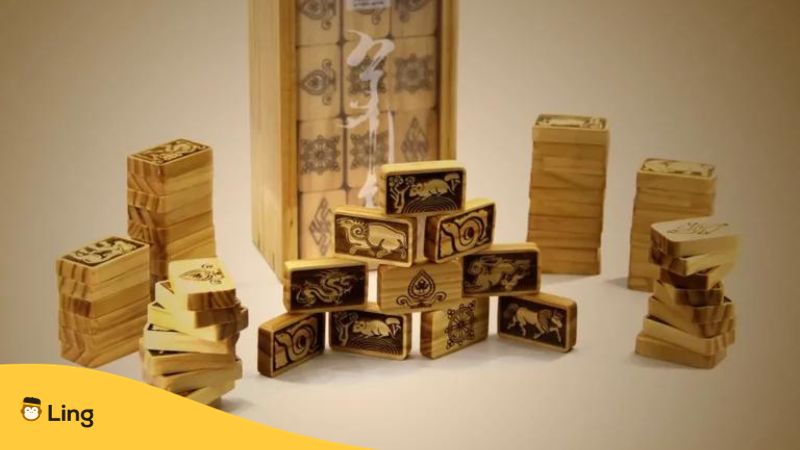
Khorol Game
Now, this is a traditional Mongolian tile-based showdown that is all about strategy, wit, and a hint of Lunar New Year’s magic!
Objectives: So, what’s the deal with Khorol? The goal is simple yet challenging: clear your hand of all tiles. Be the one to flip over that final tile, and you’re the champ of the game!
Rules: Here’s the scoop: Khorol is played by two to eight players, with four being the usual crew. Each player starts with a set of tiles. The game revolves around skillfully removing tiles from your hand. You’ve got to be clever in your moves, as the player who flips the last tile becomes the hero of the hour. It’s a blend of strategy and excitement, kind of like a tile-flipping race!
Significance: Beyond the fun, Khorol is steeped in tradition. It’s a Lunar New Year’s favorite, a time when friends and family gather to enjoy some friendly competition.
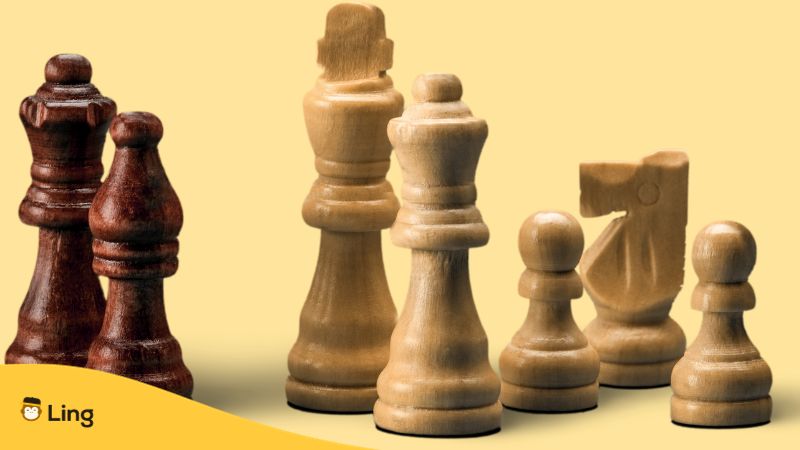
Mongolian Chess
Yep, you’ve read that right—chess, also known as “Shatar”! Even though it is similar to chess as we know it today, it has a few tweaks.
Objectives: Outmaneuver your opponent and capture their King.
Rules: There are some differences with traditional chess. In Shatar, the King cannot castle, and the Queen moves like a rook or one square diagonally. Surprisingly, the Knight can’t checkmate, and the Pawns don’t have a double initial move, except for one. The game also begins with an obligatory first move.
In this chess variant, there are three types of checks: “Shak” by the queen, rook, or knight, “Tuk” by the bishop, and “Zod” by the pawn. However, winning requires a specific sequence: either checking with a queen or rook and then checkmating, or a series of checks involving at least one queen or rook check. Using a knight for checkmate is not allowed. If you don’t follow these rules, it’s a draw known as “Niol.” If both players have only their kings left, it’s also a draw, called “Robado.” So, it’s all about the right sequence and strategy in this chess variation!
Significance: The Mongolian traditional folk games include chess because it reflects intellectual prowess and is a beloved pastime that preserves Mongolian heritage.
Learn Mongolian With Ling
In a land where nomadic traditions meet strategic brilliance, Mongolian childhood games are not just played; they’re a vibrant tapestry of culture and fun, connecting generations and celebrating the spirit of the steppe. So, why stop learning now? Keep exploring Mongolia and the world’s wonders and languages with the Ling app today!
The Ling app is your language buddy! It’s like a game, but you’re mastering Mongolian. Quick lessons, a chat with AI, and 60+ other languages to choose from make learning much more fun. The Ling app has your Mongolian journey covered, so let’s talk fluently and have fun!
Get it for FREE at the Google Play Store or Apple App Store!
